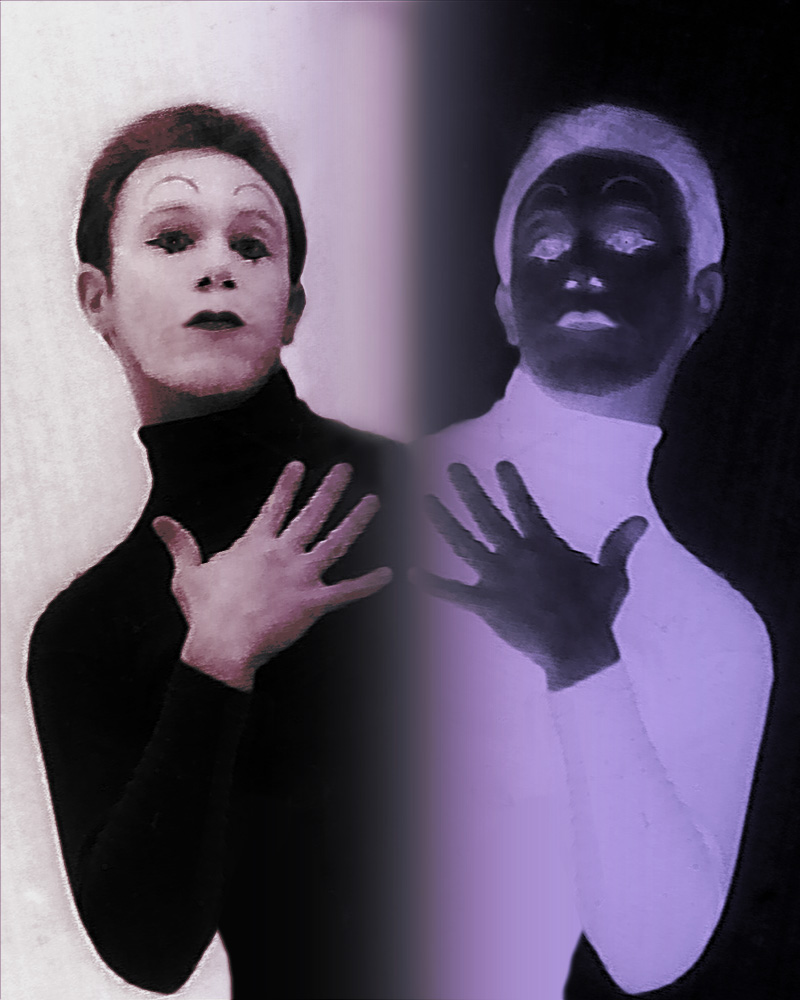Atmosphere (1)
(part one of four)
I performed my first solo mime show near the end of my freshman year in college. It took place in a small “black-box” theater in the basement of a dorm, empty except for black-painted walls and rows of folding chairs on risers. The entire technical crew consisted of my roommate Jay (running the lights) and his girlfriend Betsy (playing musical accompaniments on a cassette tape recorder).
At curtain time — a quaint misnomer, since there was no curtain — Jay brought the house lights down and I stepped out into the darkness. An atmosphere of electric anticipation, of openness to possibility, filled the room. I took a deep breath, inhaling that atmosphere and drawing nourishment from it. When the stage lights came up, and the audience and I could see each other for the first time, I was able to launch into the show with confidence and joy.
That night was the first time I fully experienced the power of the embrace of an audience. Each movement I made was returned to me in the form of childlike laughter, or gasps of recognition, or stillness of thought and feeling. And those responses flowed into me as naturally as air or sunlight, giving me life, and letting the next movement spring forth the way a plant sprouts from soil.
The show was repeated the following night and was again well received. The student managers of the theater — who had taken a chance in booking me, an inexperienced freshman, to do a solo show — were pleased with my performance and gratified by the audience response. At the end of my two-night run, they asked whether I’d like to repeat the show for another two nights the following week. “Sure,” I said. I blanketed the campus with posters featuring a “HELD OVER!” banner across the top. The student newspaper published an article about me, including a positive review of the show. There was also, I would assume, some favorable word-of-mouth.
The following week, the theater filled up as it had the week before. Once again, Jay lowered the house lights, and I stepped out into the darkened room and took a breath. But this time, there was something wrong. The atmosphere in the theater was thick and heavy. Breathing in the darkness, I became filled not with joy and energy, but with tension and dread. When the stage lights came up, I felt fully what I was up against. These audience members were not innocent; they were not even necessarily on my side. They had seen the posters boasting “HELD OVER!” They had read about this show in the paper and heard about it from their friends. Now they were here to see it for themselves. Several of them sat with their arms crossed, as if to say, “OK, you’re supposed to be good? Show me.”
In physical terms, the performance I gave that night was barely different from the one I gave the week before. I made the same movements with my body and displayed the same facial expressions. Jay and Betsy hit their buttons on cue. But the experience of the performance, both for me and the audience, was profoundly different. Whereas the first week’s show was truthful and alive, the second week’s was forced and mechanical. In the first week’s show, the audience and I were united, sharing a common energy; in the second week, the audience and I were separate, each of us responding to the other in the ways we’d been conditioned to respond. And the show, needless to say, fell flat.
How could two experiences appear so similar and yet be so different? The easy answer might be that I was at fault — that my success during the first week made me overconfident, and that I therefore didn’t put as much spirit into my performance the second week. Or, alternatively, the audience was responsible — the second week’s audience had prejudged what they would see, and therefore lacked the openness and receptivity that the first week’s audience had had.
Both of those things may indeed be true. But I don’t think either of them provides a full explanation for what went on.
I remember the moment when I first stepped from my dressing area onto the stage. At that moment, both the audience and I were in darkness. Neither of us could see the other. Their pre-show chatter had faded into silence. I, too, was silent. They sat still in their seats; I was motionless on the stage. There was, in the conventional sense, no communication between us.
And yet, something was communicated. In the first case, it was a warm embrace; in the second, it was a cool detachment. In both cases, it was strong and tangible. It filled the room; it was in the very air I breathed. I could not question the reality of it.
(To be continued in part 2)

I think the performer and the audience create a “third space.” When met with the kind of energy you experienced from the “held over” audience” I’d love to be able to stay soft and open and see if their energy might shift as well.